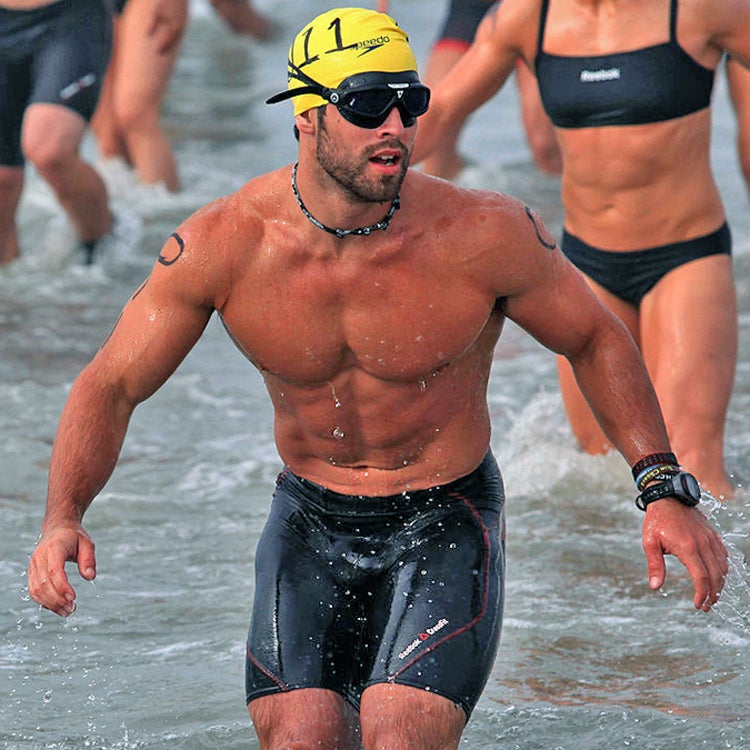I was scared to swim across San Francisco Bay. I'll admit it.
Even though I'd done many triathlons over the years, the swim that starts off the legendary Escape from Alcatraz Triathlon is unlike any other in the sport: You leap into the water from a packed and heaving ferryboat near the old island prison, then swim toward the city through bone-chilling 50-something-degree water being sucked out beneath the Golden Gate Bridge. There aren't really supposed to be great whites in the Bay, but, well, it only takes one, right? The fear: It's why Alcatraz was made into a federal pen back in 1934.
I jumped in anyway. After 15 minutes of panicked freestyle, I took a break to tread water and catch my breath. Ahead of me was the San Francisco skylineÔÇöthe skyscrapers, the hills, Fisherman's Wharf. I snuck a peek over my shoulder at the Rock itself. I was in a splashing column of 1,800 swimmers, all of us being pushed closer to shore by a stiff tideÔÇömaking the swim easier than I'd expectedÔÇöand I realized that not only was I done freaking out, I was having an absolute blast.
That's the thing with triathlons: The event itself always ends up being so much more fun (and doable) than you expect. Blame the sport's first big-time race, the 31-year-old Ironman, for the enduring perception that triathlons are all about agony. These days, races come in many flavors, from the relatively easy “sprint distance” events (half-mile swim, 12-mile bike, three-mile run) to intermediate events like Alcatraz (the 1.5-mile swim is followed by an 18-mile ride and a hilly eight-mile run)ÔÇöall involving much less agony than the 2.4-mile swim, 112-mile ride, and 26.2-mile run of an Ironman. And those shorter events have helped spur explosive growth in the sport. Last year, more than 1.2 million people entered a road triathlonÔÇöabout 50 percent more than in 2007ÔÇöand there are almost twice as many triathlons around the country now (1,891) than there were in 2005.
If you're thinking of joining the club, allow me to make a bold suggestion: Do Escape from Alcatraz first. This is not as crazy as it sounds. Sure, Alcatraz is tough on beginners and pros alike. At the end of the swim, you run almost a mile to warm your body, so you're not too hypothermic to ride a bike, and the real running leg includes an are-you-kidding-me grind up the infamous Sand Ladder, 200 wooden beams climbing up from the beach. But if you put in the time to prepare, you're going to find yourself enjoying one of the most exciting and scenic triathlons anywhere.
“The Escape from Alcatraz is incredibly fun,” says Hunter Kemper, three-time Olympian and two-time winner at Alcatraz. “It's impossible to describe the feeling of jumping off that boat. There's nothing cooler for a first-timer.”
And, of course, there are the fantastic fitness benefits that come with triathlon training. The workouts reduce the chance of getting injured (or burned out) by distributing the load across three sportsÔÇöall highly rewarding in their own rightÔÇöand the event virtually demands building a fatigue-proof core that translates to more power in just about any other activity.
As I floated in the Bay, I took in one more 360-degree view, then put my head down and started stroking, this time calmly and with more confidence. I had a lot of work aheadÔÇöa hilly ride and a scenic, if grueling, runÔÇöand I was going to enjoy every minute of it.
“Escape from Alcatraz is the most unique race in the world,” Kemper says. “You won't be disappointed.”
I'll second that.
The Hardest Part of Triathlons: Getting In
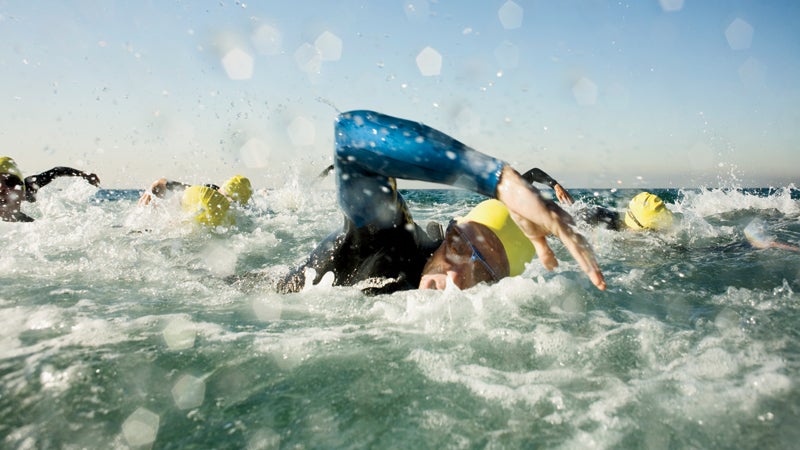
is grueling, of course, but the process simply to get a spot in the race is no picnic either. Would-be contestants entry nine months in advance, and even then only have a 40-percent chance of getting one of 1,700 spots.╠řAthletes who come up short gambling have a chance at one of 300 extra spots, however, if they're willing to pay the price. Guarantee a spot by qualifying for a one-day in San Francisco ($480).
If you need a Plan C, consider sitting this race out a year and trying these established and popular tris: (St. Petersburg, Florida), (Tunica, Mississippi), or (Richmond, Virginia).
Get Your Tri Bike a Round Trip
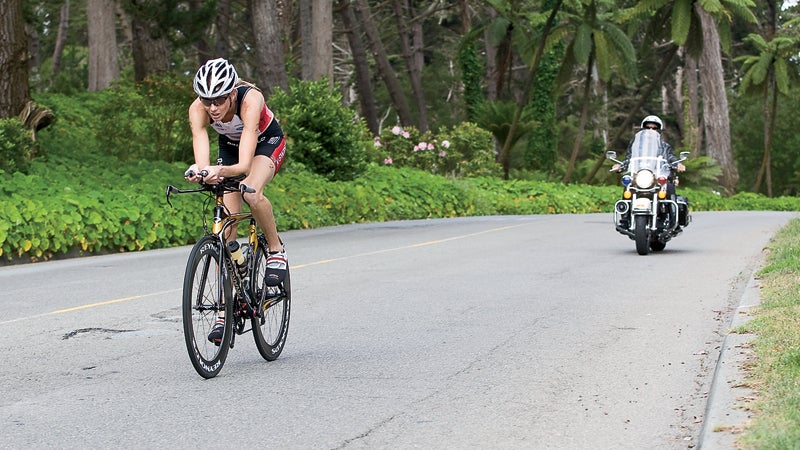
Flying with your bike can be a logistical nightmare. If you don't want to rent a rig in San Francisco, you have two alternatives.
#1: will pick up your bike from one of their partner bike shops and have it ready for you at the race. Afterwards, drop it off, then pick it up a few days later back at the shop (from $180).
#2: Have your local cycling shop break down and ship your steed to , in San Francisco, a week before the race. Post-race, just drop it off for shipping back to your local shop (from $175, plus shipping to Sports Basement).
Five Triathlon Myths Busted
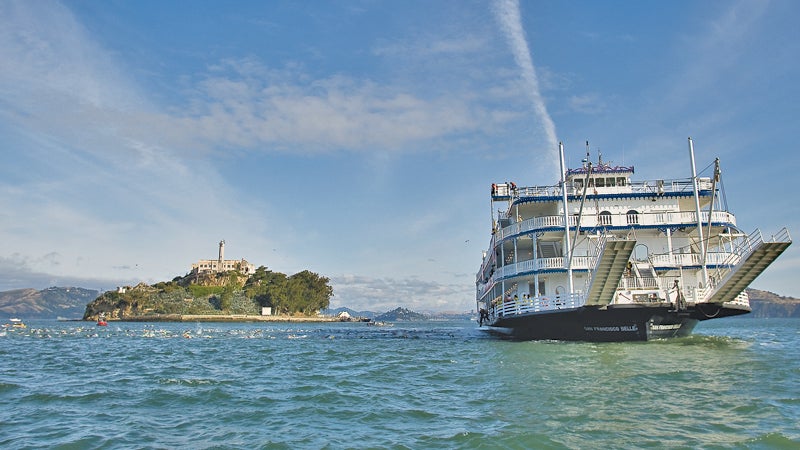
#1: “I'm not fit enough.”
You actually don't have to be an endurance freak to train for a triathlonÔÇöyou don't even need to be a good runner, cyclist, or swimmer. “There's never a starting point that's too minimal,” says six-time Hawaii Ironman champ and coach Mark Allen. The key to getting ready is to stay away from crash-course programs and give yourself enough time to prepare for race dayÔÇöat least three months, but preferably more like five. “You should enjoy this,” says Allen. “Build into it gradually so your body can adapt and you stay injury free.”
#2:╠ř“I swim like a rock.”
Join the club. “The biggest weakness for most triathletes is the swim,” says elite triathlon coach Matt Dixon. “Most racers don't have dedicated swim backgrounds.” Your first step? Slip into some simple swim fins for your first few weeks in the pool. “You'll be able to focus on being relaxed and establishing a good body position,” Dixon says. Second, take a short swim class so you can learn proper form, which will help you keep calm and breathe efficiently. Look for a local one at .
#3:╠ř“I don't have time to train.”
It takes less time than you think. The secret to realistic triathlon training is to train for it like one sport, not three. “If you're going to be successful, it has to fit into your life,” Dixon says. That means just focusing on one run, bike, or swim workout a day, five or six days a week, saving your “brick” workouts (double workouts with swim/run or ride/run) for a few key days later in your training.
#4:╠ř“I hate working out alone.”
You might think it would be harder to find workout buddies when you're training in three sports instead of oneÔÇöbut in fact you have a larger pool of partners. There are also nearly 800 newbie-friendly tri clubs across the country; find one near you at . “Training with others is a great way to make friends,” says elite triathlete Linsey Corbin, “and you'll pick up bits of advice along the way.”
#5:╠ř“I don't own a fancy bike.”
You don't need one. While you'll see sleek, $6,000 carbon-fiber tri bikes at every race, it's the last thing you need as an entry-level triathlete. “Pull out whatever two-wheeler you have sitting in the garage and use it to get started,” says Allen.
A Five-Month Triathlon Training Plan
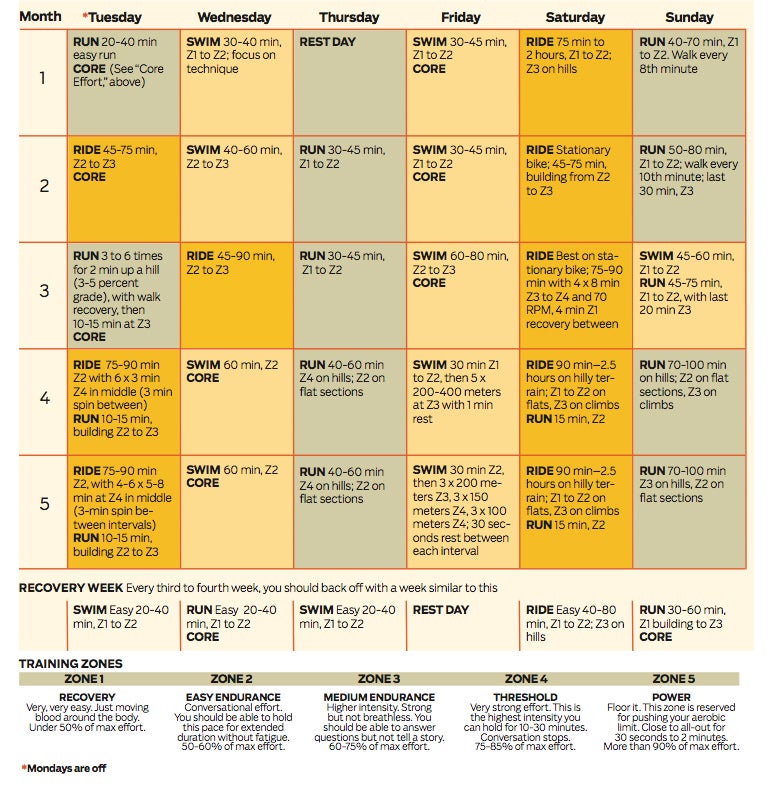
Alcatraz is not for slouches. To finish this (or any) intermediate-distance race without suffering, you'll need to put in equal time in the pool, on the bike, and on the road. This simple plan, developed by Matt Dixon, coach of Ironman World Championship runner-up Chris Lieto, spreads the training over five months, letting you gradually build up stamina and strength in three sports without them taking over your life. Start it January 1, and in the meantime begin shaping up: Take a swim class and sign up for a warm-up sprint-distance tri to get some experience.
Oh, and lest we forgetÔÇöget your gear dialed. These three cold-water pieces are essential for first-time triathletes.
#1: A full wetsuit
“Full” meaning complete coverage of your torso, arms, and legs. A more buoyant suitÔÇölike 2XU's╠ř╠ř($300)ÔÇöwill save you energy in the water. If this will be your only tri, a surfing suit will do (but expect a less comfortable swim), or look into Xterra's ($49).
#2: Layered swim caps
Two caps is the standard for keeping your head warm in the Bay, but you'll get just one in your goodie bagÔÇömade of latex or siliconeÔÇöand you're required to wear it. Bring two extrasÔÇöone latex, like Tyr's ╠ř($3), and one silicone, like the company's ($10)ÔÇöso you can wear a second without mixing materials: Latex and silicone slip off each other.
#3: Tri shorts or race suit
Having to change from wetsuit to biking shorts, then biking shorts to running shorts, will cost you time. Instead, start the race with Pearl Izumi's ($65) or╠ř╠ř($90) under your wetsuit. Both are quick-drying and provide a chamois for cycling as well as a chafe-free design for running.
Core Strength for Triathletes
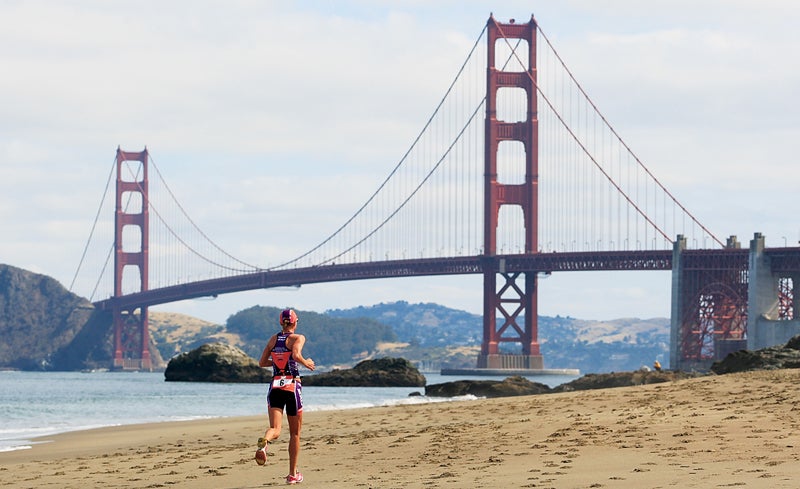
Three sports, one strength recipe.
Planks: Facedown, hold your body in a straight line, resting on your elbows. 2 x 15-60 seconds.
Body-Weight Lunges: Keeping your torso upright, step forward and kneel until your front knee is at a 90-degree angle; repeat with your other leg. 2 x 12 reps.
Bicycle Abs: Lie on your back with knees in the air. Keeping lower legs nearly parallel to the floor, slowly pedal your feet, six to 12 inches off the ground. 2 x 12-15 reps.
Side Plank: Form a plank on one side, with weight on one elbow. 2 x 15┬ş-60 seconds. Switch sides.
Step-ups: Find a bench just above knee height. Keeping your front knee behind your front foot and an upright back, step slowly onto the bench. 2 x 6-12 reps.
A Triathlon Meal Plan

Before:╠řDon't go out and binge on pasta the night before. Just eat a standard portion of a carb-based meal you're familiar with. Then, the morning of the race, have an early breakfast. “Get up two to three hours before the start and eat something high in carbohydrates and low in fat and fiber,” says pro triathlete and nutritionist . Toast, bananas, and sports drinks are staples; energy bars also work.
During:╠řThroughout the bike and run, you want to deliver a steady stream of calories and water to your working musclesÔÇöup to 60 grams of carbs and 20 ounces of fluid per hour. On the run, drink stations will be set up every mile, but bring your own gelsÔÇöwash one down with 8 or 10 ounces of water every half-hour. (And sample different products in training so you know what will work best for your system on race day.)
After:╠řBounce back quickly by downing a liquid meal supplement with a mix of carbohydrates and lean protein, like╠ř (from $44 for 12)╠řwithin 40 minutes of finishing. Keep one on hand for after the race. (Following hard workouts, simple combos like cereal and milk or chicken and rice work just as well, says Taylor).
Multisport Mistakes
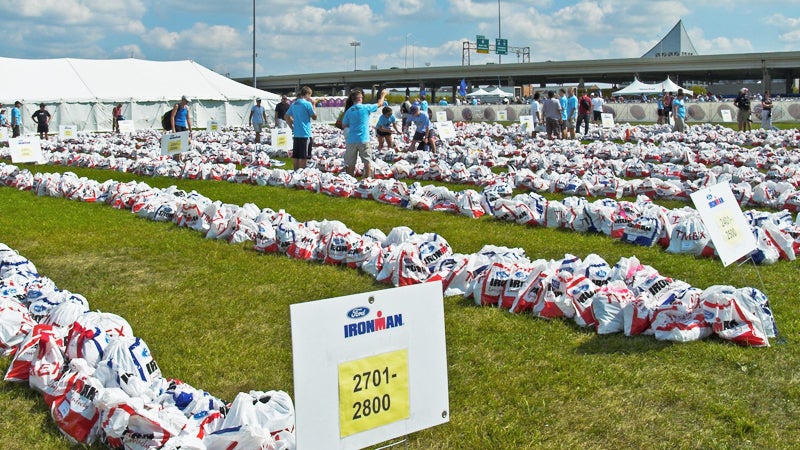
According to Eugene, OregonÔÇôbased coach (and pro) , these are the three most common blunders made by first-time triathletes:
#1: Swimming only in pools
“Make sure you get open-water experience so you feel comfortable on race day,” Madison says.
#2: Not practicing transitions
Rehearse taking off your wetsuit, getting on and off the bike, and changing from biking to running shoes to make it automatic on race day.
#3: Never finding your speed
It doesn't matter how fast or slow anyone else is. “You need to have an idea of the pace you can hold for the distances of your race.”


